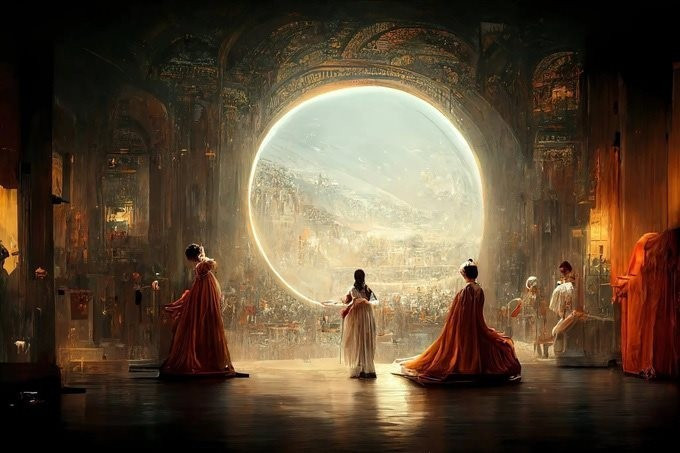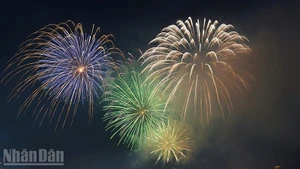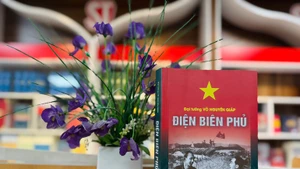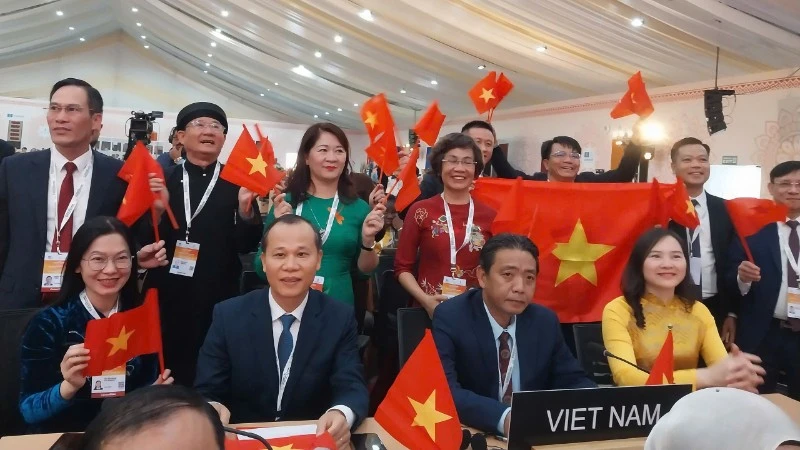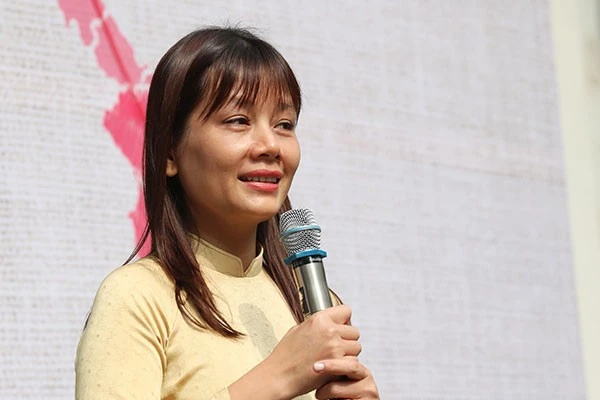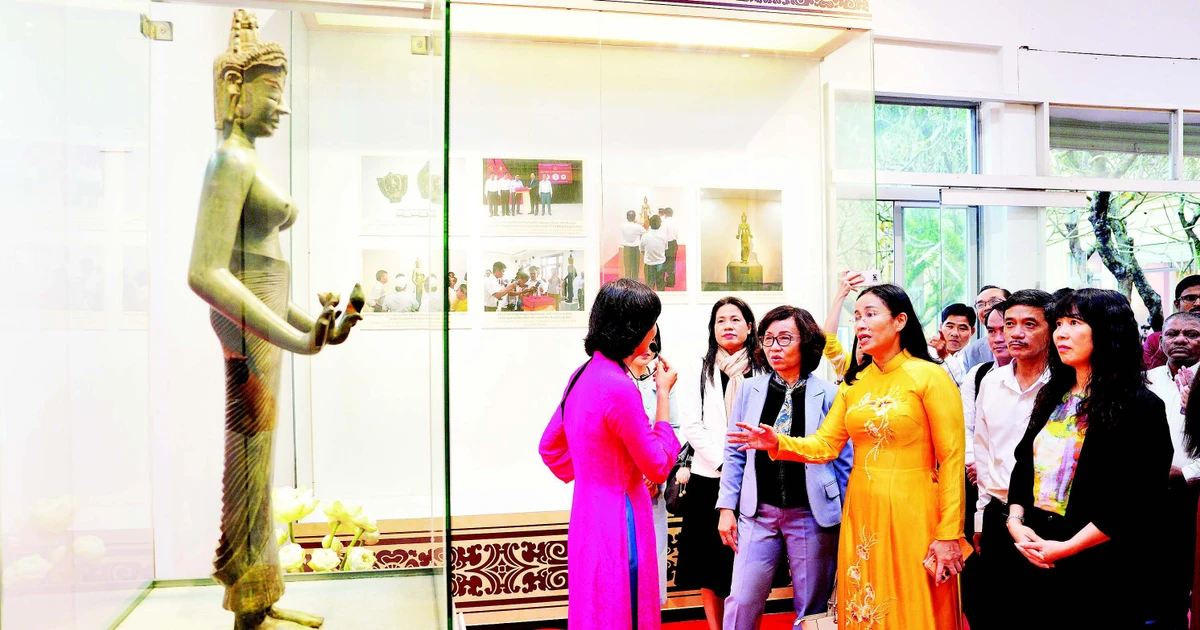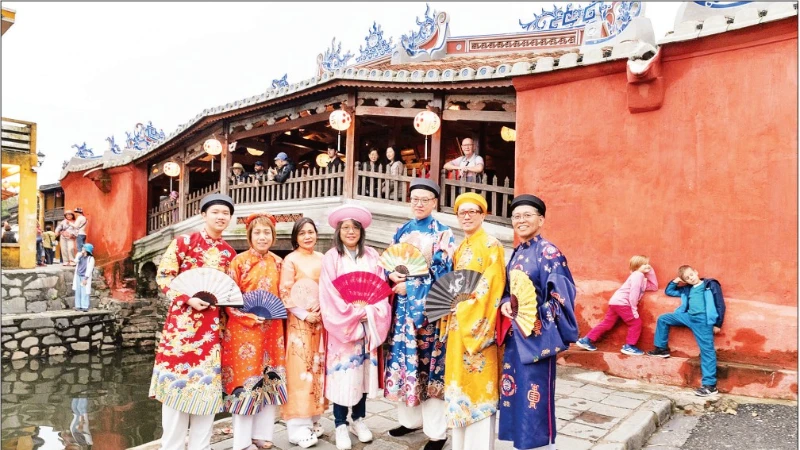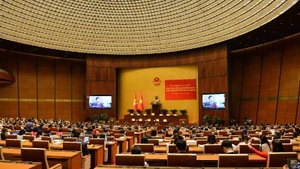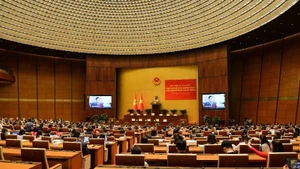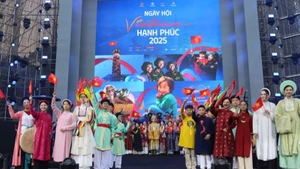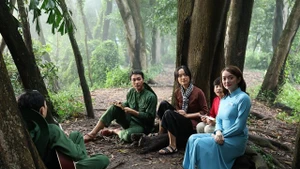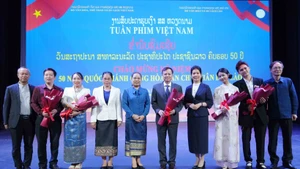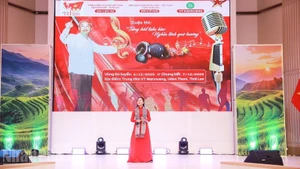In 2016, the novel “The Day a Computer Writes a Novel”, created by a team of AI developers, passed the first round of Japan’s Hoshi Shinichi Literary Award, drawing significant public attention. Although it did not win, the fact that AI contributed as a “co-author” sparked the question: Could AI one day replace human creators?
In recent years, AI has increasingly penetrated literature and the arts worldwide, including in Viet Nam. In 2022, Jason Allen from Colorado, USA, won first prize worth 300 USD in a digital art competition with a piece generated by the AI programme Midjourney.
In Viet Nam, AI played the female lead in the film “Chot don” (directed by Bao Nhan and Nam Cito, released on August 8) and contributed to the soundtrack of “Quy nhap trang” (directed by Pom Nguyen and produced by Nhat Trung). While opinions remain divided, AI’s presence in artistic creation is an undeniable trend.
AI now stands as a “powerful collaborator”, offering opportunities but also presenting significant challenges to creators. At the seminar “Copyright and Sustainable Development of the Digital Content Industry”, Hoang Dinh Chung, Director of the Digital Copyright Centre (Vietnam Digital Communications Association), warned of eight forms of copyright infringement surging online: plagiarism; impersonation of authors; distribution of counterfeit works; unauthorised reproduction; modification, mutilation, and distortion; copying; creating derivative works; and use without paying royalties. These infringements are not new but have become more sophisticated and harder to control in the digital space, especially with AI’s support.
Many Vietnamese artists are affected by AI’s ability to mimic and replicate creative styles. In visual arts, the styles of renowned painters are imitated so convincingly that collectors struggle to distinguish originals from fakes. Photography faces the risk of AI-generated images created from text prompts without cameras. In music, AI can reproduce the voices and arrangements of famous singers, producing tracks that sound new but lack originality. In literature and publishing, this phenomenon is increasingly common, from personal entertainment to commercial products. AI’s ability to “learn” and reproduce without credit threatens to homogenise creative identities, blur individual signatures, and undermine the diversity of the digital cultural ecosystem.
This is not unique to Viet Nam; the global creative and artistic industries are grappling with the AI storm and an unresolved question: Who is the true author of an AI-assisted work? Clause 2, Article 4 of the current Intellectual Property Law states: “Copyright belongs to organisations and individuals for works they create or own.” This shows that the law only recognises humans as copyright holders, necessitating criteria to evaluate author contributions in AI-assisted works and mechanisms for copyright registration.
Widespread copyright infringement is not just a legal issue but has severe consequences. It directly harms artists, eroding their emotions and motivation when works are copied or used without permission. It causes economic losses for content producers. According to the Vietnam Centre for Protection of Music Copyright (VCPMC), thousands of songs are exploited illegally on social media each year, with few paying royalties. Over time, this distorts the market, fosters a “free-riding” mentality, and devalues intellectual property rights. Even worse, without effective enforcement mechanisms, Viet Nam risks becoming a “copyright black hole”, deterring international creative projects and weakening cultural competitiveness globally.
“It is no coincidence that works which endure in the public heart embody truth, goodness, and beauty… These are values that cannot be programmed; only an artist, with a life lived fully, responsibly, and sometimes sacrificially, can bring them forth. AI cannot breathe soul into a work – that depth will forever belong to humans. In a turbulent environment, creators must uphold a firm foundation and professional integrity.”
Assoc. Prof. Dr. Do Hong Quan
President of the Vietnam Union of Literature and Arts Associations.
While acknowledging AI’s role, many artists emphasise the need for a transparent legal framework and civilised practices in its use. Artistic creation requires lived experience, personal emotion, and unique perspectives — the very essence of artistic transcendence that AI cannot replace.
Assoc. Prof. Dr. Do Hong Quan affirmed: “It is no coincidence that works which endure in the public heart embody truth, goodness, and beauty… These are values that cannot be programmed; only an artist, with a life lived fully, responsibly, and sometimes sacrificially, can bring them forth. AI cannot breathe soul into a work – that depth will forever belong to humans. In a turbulent environment, creators must uphold a firm foundation and professional integrity.”
Experts argue that technology is merely a tool; what matters are human intentions and motives. It is thus essential to harness technologies like blockchain, watermarking, and fingerprinting to identify content, trace origins, and authenticate original works. At the same time, a centralised copyright database connected with major technology platforms is needed to ensure synchronisation and effective traceability.
Beyond technical measures, building a culture of transparency and ethical practices in creating and consuming art is crucial. Publishers, film studios, record labels, magazines, and digital platforms must implement clear policies and require provenance checks before releasing works. Public awareness and education on responsible creative culture should also be integrated into curricula, from general education to art schools. When audiences understand and value copyright and originality, they become a natural filter, fostering a fair, transparent, and sustainable art market.
For artists, as the primary creators, it is vital to equip themselves with legal knowledge of copyright, join collective management organisations, and adopt technological tools for identification and anti-piracy. Above all, they must maintain professional integrity and responsibility: honesty in creation and clarity of authorship. This not only protects individuals but also contributes to building a transparent, fair, and humane cultural industry, enriching the digital cultural foundation and enhancing global competitiveness in literature and the arts.
